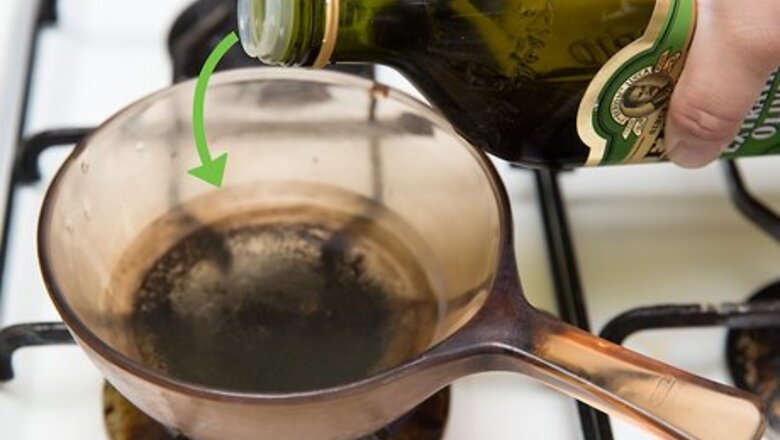
views
Removing Earwax with Olive Oil
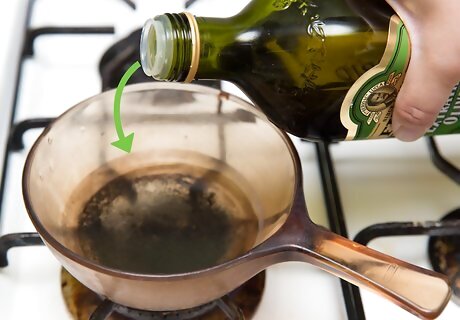
Warm up the olive oil. Olive oil helps soften the wax in your ears, making it easier to drain on its own. Before putting any of the oil into your ears, however, you should warm it roughly to body temperature—98.6°F (37°C). This is the temperature of your inner ear, and the oil will be more comfortable at a comparable temperature. You should warm two to three tablespoons of pure olive oil. Ensure you don’t overheat the oil since this can cause damage to your eardrum.Tip: While olive oil is a popular choice for removing earwax at home, it’s not your only option. You can also safely use hydrogen peroxide, glycerin, baby oil, or mineral oil.
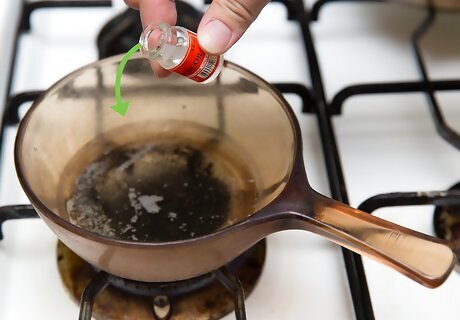
Add essential oils if you wish. Blockages can also trap bacteria, which can lead to infection of the ear. Some people choose to add essential oils with antibacterial properties to help with excess bacteria that may be present due to the blockage. However, the olive oil alone has shown to be effective in simply helping to break up the blockage. Make sure to test a drop or two of the oil on your skin to check for irritation before adding it to your ears. Add about four drops to the warmed olive oil. Some essential oil options include: Garlic oil Eucalyptus oil Lavender oil, which is safe for children Oregano oil St. John’s wort
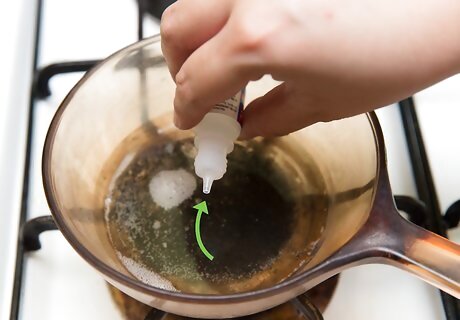
Collect some of the mix with an eyedropper. Once you’ve mixed the olive oil and any essential oils you’ve chosen, pick up some of the solution with an eyedropper. This will help you deliver the correct amount of the solution, and it’s much easier than trying to pour olive oil into your ear.
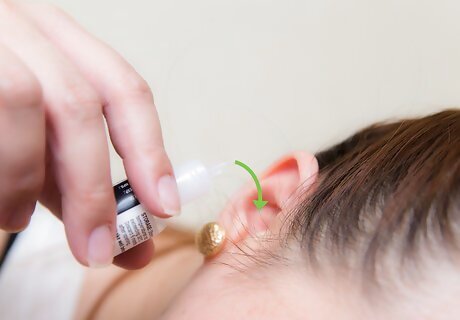
Squeeze two drops of the solution into your ear. Rather than filling your ear with the oil, you can apply just a few drops, which will soak into the wax. Keep your head titled to stop the oil from escaping for five to ten minutes. You can keep a tissue next to your ear to catch any remaining oil that drips out when you straighten your head—if any.
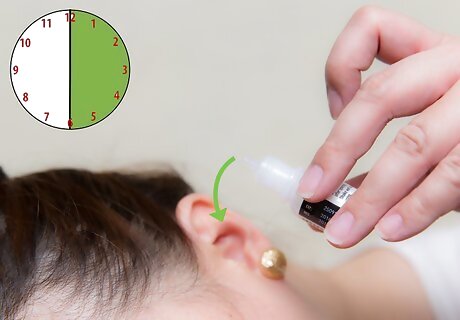
Repeat the process two to three times a day. Using the olive oil isn’t likely to work in a single application. You should try to repeat the process two to three times each day for approximately three to five days. This should be sufficient time to help dissolve and break up the blockage.
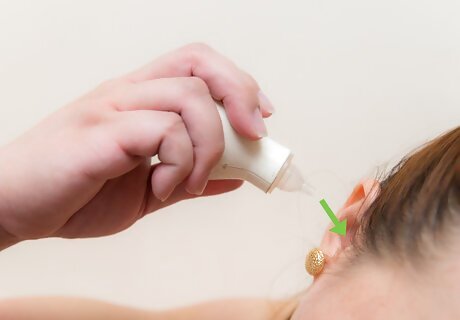
Consider irrigating your ear. Though the olive oil may have softened the blockage, some cases require more to actually dislodge it. You can irrigate the affected ear as an additional step if necessary. Use a rubber-bulb syringe (such as those used for babies), tilt your head, and gently squirt warmed water into the canal of the affected ear. Be very gentle since you can damage your eardrum if you squirt the water with too much pressure. You can pull your ear both up and backward to help straighten the ear canal for best results. Your doctor can also irrigate your ear. He or she will have a safer method with tools using an exact pressure of water to avoid damaging your ear.
Relieving Ear Congestion at Home
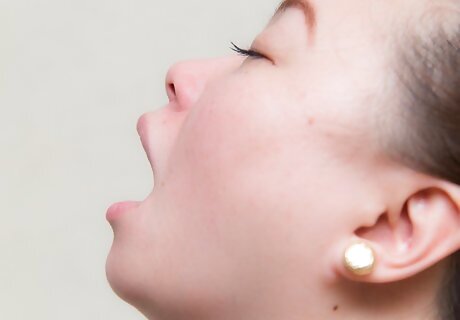
Equalize the pressure in your ears. Most often, the sensation of ear pressure isn’t a blockage at all but a brief dysfunction of the Eustachian tube in your middle ear. You can force this tube open to equalize the pressure in your ear with various easy steps, including: Yawning Chewing Swallowing Trying to exhale through your nose while pinching your nostrils closedDid You Know? Common causes of Eustachian tube dysfunction include the common cold, flu, elevation changes, and exposure to air pollutants such as cigarette smoke.
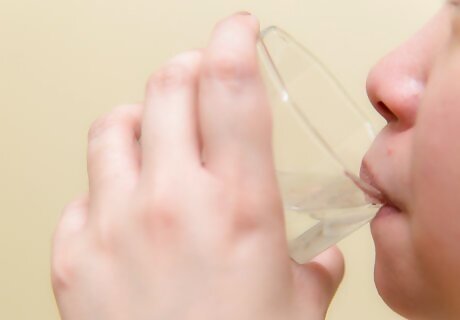
Stay hydrated. For sinus congestion that leads to ear pressure, you can also help reduce the pressure by simply staying hydrated. Fluids help to thin the mucus causing the pressure. Try to drink at least eight cups of water each day.
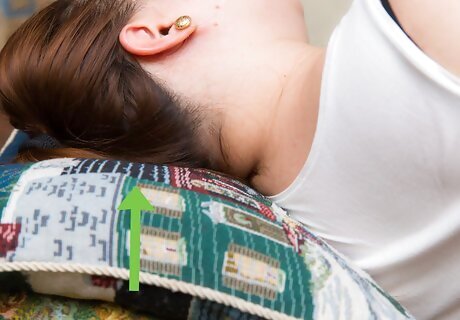
Sleep with your head elevated. By adding an additional pillow and keeping your head elevated, you make it easier for your sinuses to drain properly. This will help to reduce ear pressure.
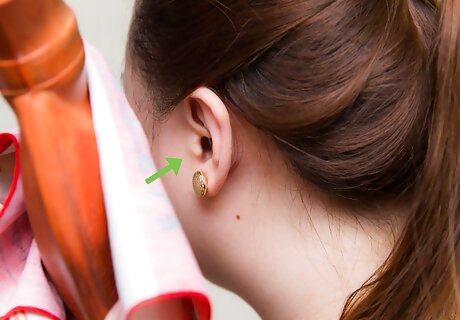
Put a warm compress on your ear. Try heating a towel and then placing the towel over your ear for several minutes. You can also place a cup over the portion of the towel covering your ear to help trap the heat.
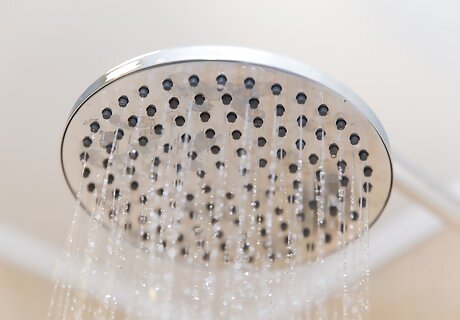
Take a hot shower. If the pressure is due to sinus congestion, you can also take a hot, steamy shower. This will help to thin and drain the mucus plugging your sinuses, which will help to relieve the pressure.
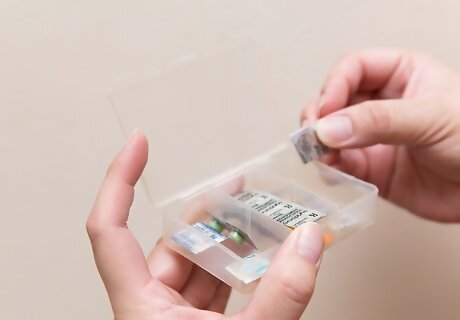
Take an over-the-counter (OTC) product. A variety of different OTC products are available to help relieve ear pressure depending on the specific cause. Common options include: Antihistamines - If your ear pressure is due to congestion from seasonal or environmental allergies, then you can take an antihistamine to help reduce symptoms. Decongestants - If the pressure is from congestion due to a cold or the flu, then a cold and flu medicine with a decongestant will help to relieve the symptoms causing the pressure. Cerumenolytics - These products essentially act the same way as olive oil to help soften the blockage if earwax is the cause of the pressure.
When to Seek Medical Treatment
See your doctor if you have symptoms of a blockage, which can be serious. Although olive oil might help you deal with mild ear congestion, you’ll need a doctor if you suspect you have a blockage. Your doctor can assess the blockage and determine the best way to remove it. Additionally, they can rule out other potential causes of your symptoms to make sure you don’t have another underlying condition. If you experience the following symptoms, see your doctor: Earache Feeling of fullness in your ear Decreased hearing Tinnitus (ringing or noises in your ear) Dizziness CoughTip: An earwax blockage causes similar symptoms to other ear conditions, so it’s important to get your ears examined by a doctor to make sure you get the proper treatment.
Visit your doctor to safely remove the wax if olive oil didn’t work. It’s difficult and unsafe to try to dig out wax yourself. In fact, you’ll likely make it worse because the wax will get pushed farther down into your ear as you try to get it out. Your doctor can safely remove the excess earwax in their office using one of these methods: Ear drops can dissolve the ear wax so it drains out of your ear. This is an easy and painless procedure. Irrigation is a simple, painless procedure where the doctor uses a bulb syringe to suck out the excess earwax. A cerumen spoon is a small medical instrument that your doctor can use to painlessly remove excess earwax by scooping it out.
See your doctor if you’ve ever had an ear injury. While olive oil is usually safe for healthy people, certain injuries and conditions can make your ears too sensitive for it. If you have any of the following problems, speak to your doctor before taking any action. Perforated eardrums Frequent ear infections Hearing loss in either ear Mastoid cavity Any condition for which you've been told to keep your ears dry
Call your doctor if your child has ear congestion. Some children struggle with ear infections and other related issues, so it’s important that you get your doctor’s advice about what to do. Your doctor may advise you to bring your child in for an exam, or they may recommend home treatment. Make sure you follow all of their advice so your child gets the best care possible. Your doctor will likely want to do a checkup if the ear congestion has lasted longer than 48 hours or if they think your child has a blockage.


















Comments
0 comment